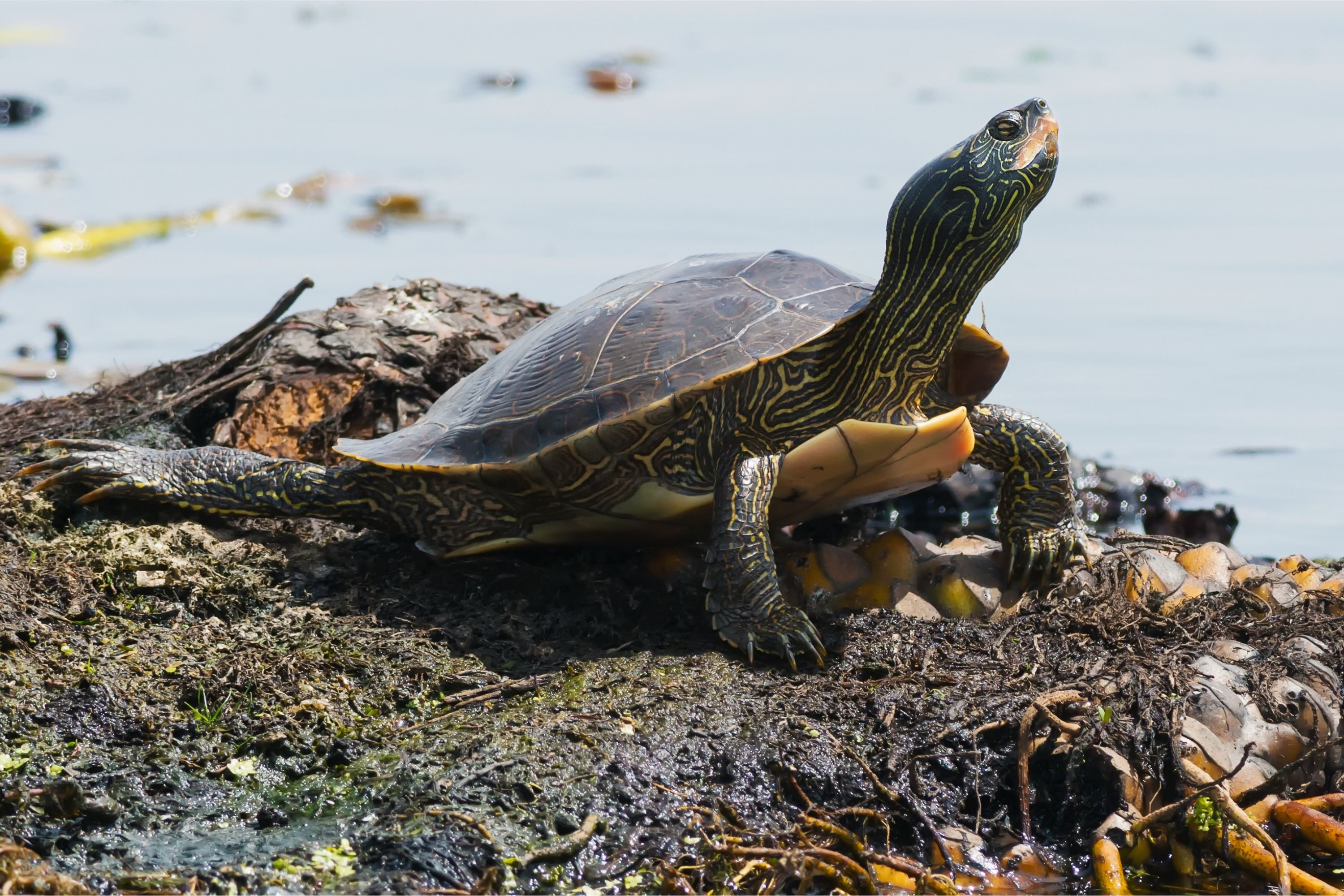Northern map turtle
(Graptemys geographica)

Description
The northern map turtle (Graptemys geographica), also known as the common map turtle, is an aquatic turtle in the family Emydidae. It is endemic to North America. The northern map turtle gets both its common and scientific names from the markings on its carapace, which resemble contour lines on a map or chart. These lines are usually shades of yellow, tan, or orange, and are surrounded by dark borders, with the rest of the carapace being olive or greyish brown. However, the carapace markings tend to fade as the animal matures, and in older individuals are usually only visible when the shell is wet. The carapace has a hydrodynamic appearance and is broad with a moderately low keel. The rear of the carapace is flared and the rear marginals form serrations. The plastron is yellowish and is marked by a central dark blotch (plastral figure) that follows the sutures of the plastral scutes and fades with age so that many adults lack a pattern all together (i.e., the plastron is immaculate). The head, neck, limbs and tail are dark green with thin yellow stripes, and an oval or triangular spot is located behind each eye. Like other map turtles, this species exhibits extreme sexual size dimorphism; males are 10–16 cm (3.9–6.3 in) in carapace length and weigh between 150–400 g (5.3–14.1 oz), while females are 18–27 cm (7.1–10.6 in) in carapace length and weigh around 0.67–2.5 kg (1.5–5.5 lb). Females have a much wider head than males and this is associated with differences in feeding. Males have a narrower carapace with more distinct keel, narrower head, and a longer, thicker tail. Unlike females, the opening of the cloaca is beyond the rear edge of the carapace. Young map turtles have a pronounced dorsal keel. Hatchlings have a round greyish-brown carapace that is about 2.5 cm (0.98 in) long. Northern map turtles inhabit an area from south Quebec and Ontario to northern Vermont where it lives in the St. Lawrence River drainage basin. Its range extends west through the Great Lakes and into southern Wisconsin and eastern Minnesota, west of the Appalachians, south to Kansas and northwestern Georgia. The northern map turtle inhabits ponds, rivers, and lakes. They prefer large bodies of water and areas with fallen trees and other debris for basking. These turtles are more often found in rivers than in lakes or ponds.
Taxonomic tree:







